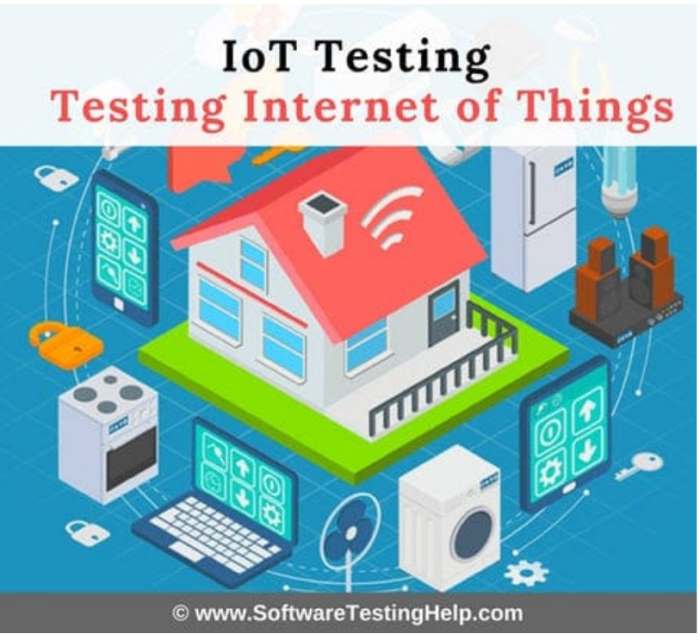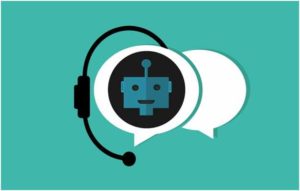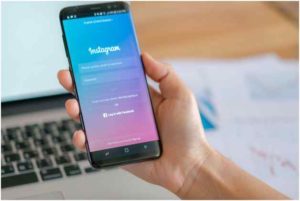3 Internet of Things Testing Strategies
Testing the internet of things isn’t that different from testing anything else. You might hypothesize, create variables, set a table of rules and measurements, test and then come up with a concussion that will inspire more testing or prove a hypothesis true toward even more solutions. When it comes to digital marketing and product production, testing in IoT means that we are no longer just assuming that something is the best route to take or making blanket statements about what will work; we are testing to define what works and what doesn’t before we invest time and money into a solution. There is no more guessing about what needs to be done and how because we are all connected via the internet of things. An IoT device test or a succession of them, for that matter, provides proven results.

Source: Softwaretestinghelp.com
So how will something work? How can we prove it is effective? What is the best route to take for this product or that decision? This variable or that one? Humans in control of these sorts of decisions don’t have to shoot in the dark anymore, nor hold the weight of liability when it comes to investing in design and development. We now have the ability to run data captures and learn which online journey functions best. Regarding products, which variables will be most efficient when it comes to launching an automated process.
Testing provides confidence in the declaration of what will function best. You might think about not testing like food prep if comparing the creative process of launching things that will make life better to the function of a restaurant. Hundreds and hundreds of thousands of devices will utilize any given int ecosystem. The decision making process that used to be derived from the human brain is effectively translating some delegated activities wherein automated processes can take over. Not testing is the process during which, these behaviors can be researched, developed and maintained.
What is IoT testing?
Internet of things testing is for designers, developers, stakeholders, marketers and strategists so that they may contribute to the larger cause of supporting business. In some instances, a budget might behave from having learned how to effectively communicate a process to an iOS tool, software, or service. After the data is delivered from each test, there might be a whole additional load of tests that take place to help refine and maintain the job duties.
The tasks that are tried and true as a result of traditional testing involve a set of rules or a template to go by that will function with a generation of variables. Constant variables will show the contrasting fluctuation in varied results when presented juxtaposed to each other. Performance testing lets us know how users engaged with the experience. We will learn the most effective approach versus the least effective tactics. Any combination of iot testing will provide a data capture go-by to ensure that each service, device or process finds it’s way to the right user at the right moment and helps to provide optimal function.
Technologies Used in Internet of Things
IoT device test equipment is heavier in concept than any tactile tool you can find. A basic template to invite engagement and a handful of variable tests will prove effective with an obtuse variety of users to merely behave with the experience design before them. The biggest and most powerful tool in IoT testing is time. Research, redesign, and relaunch; these concepts support and connect the findings from one test to another. A real process of optimization, strategists and designers team up to gather the data and create something else that works effectively, yet again.
Research technology is a fantastic resource for learning from studies and groups with documented surveys and research that has already been collected and archived. Keywords and informative collectives support testing by making the technology for research easy to fetch. Actually, systems that handle data from scenarios, rules and tools help with product development and time.
Good IoT Testing Strategies

Another giant tool in good testing the internet of things is human behavior. The way that someone engages with a test is a test in itself. After a product, process or automated experience has been launched for reception, engagement with the human user is the real light on how these types of tests prove effective. When a business has invested in the time it takes to host user experience teams, the consumer product promised to customers and potential buyers is a remarkable design that they can stand by. IoT testing tools and strategies support functions to make life easier. Especially nowadays testing is one of the crucial factors for industrial IoT software.
-
Design Strategy
While constructing IoT tests, remember to keep most visual elements the same in one test run. A distinctive contrast in the visual information will create results with inquiries into ‘the most effective button color’, or ‘which menu should stay available after the initial scroll?’. Internet of things testing for design supports the best return on investment because visual element variables prove to have an impact on the user’s experience. You might test variables such as, “which background gets the best response?” or “which button language is most inviting”.
-
Usability Testing
When planning internet of things testing with usability tests, it is important to remember that engagement is the ultimate goal. When testing variables, think about the most common behaviors and run variations on those facets. Automated testing could include volume, load or stress testing, providing valuable and inarguable insight into your current strategy. Don’t be afraid to reach for usability during any part of your project’s development and success.
-
Data Analysis via Spike Testing
A post-launch review is a great way to set the stage for moving forward after your initial tests are complete. Spike testing is a method by which you’ll visually observe the data capture to review how the IoT tests are performing when the load is suddenly increased. Endurance testing, scalability testing and capacity testing provide contributing data from multiple scenarios or potential angles of the end-user experience. When you juxtapose all of these visual elements, it will communicate a path to move forward.
Conclusion
Target performance indicators help analysts present test results that attribute to the usability of a product, service, or software application. Testing the internet of things helps to push ideas to fruition by utilizing time and behavior as indicators of the functionality of each concept. The framework is usually tested alongside a thread-party service of metrics and research analytics.
Remember, the key to understanding the internet of things means that you grasp the concept of its organic and evolving nature when you run an IoT device test. Contrary to popular belief, Internet of things testing is actually comparable to gardening or harvesting year-round for a feast. Using this analogy, that feast is a plentiful data return with a plethora of insights to consider regarding an optimized set of decisions for department heads or another system to resolve. Embedding performance testing into your project development is highly recommended due to the accuracy provided by automated tests and hyper-sensitive data captures.








